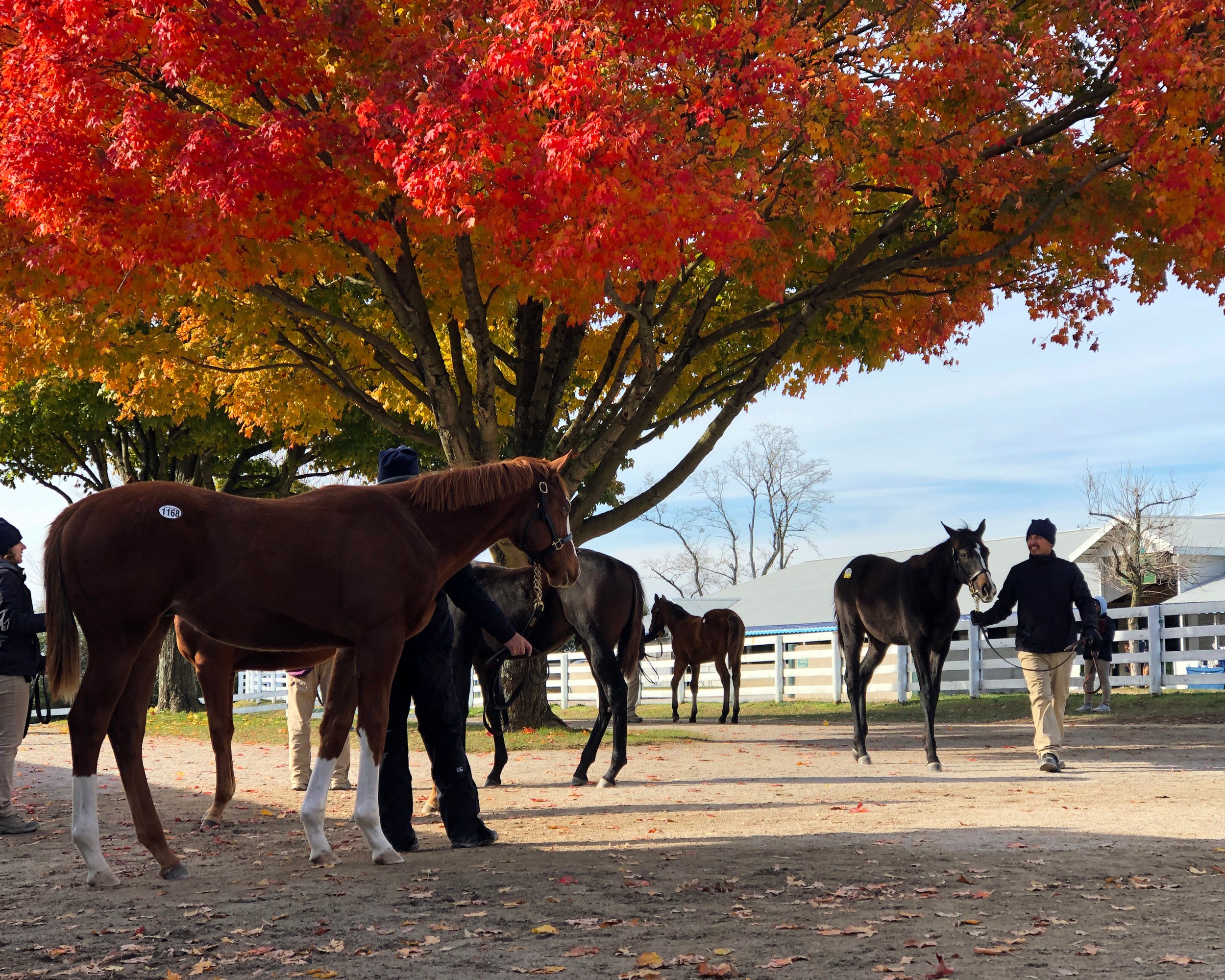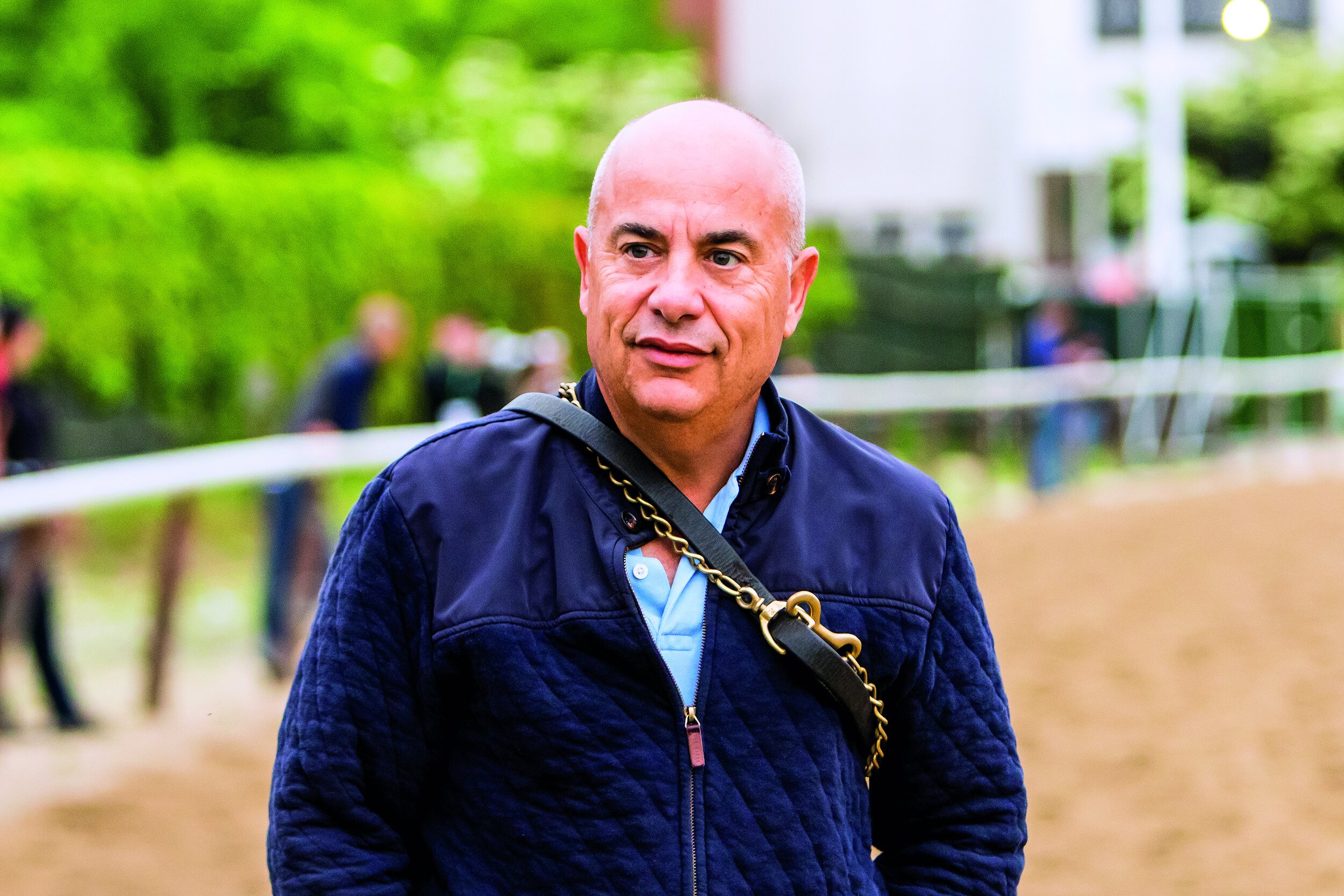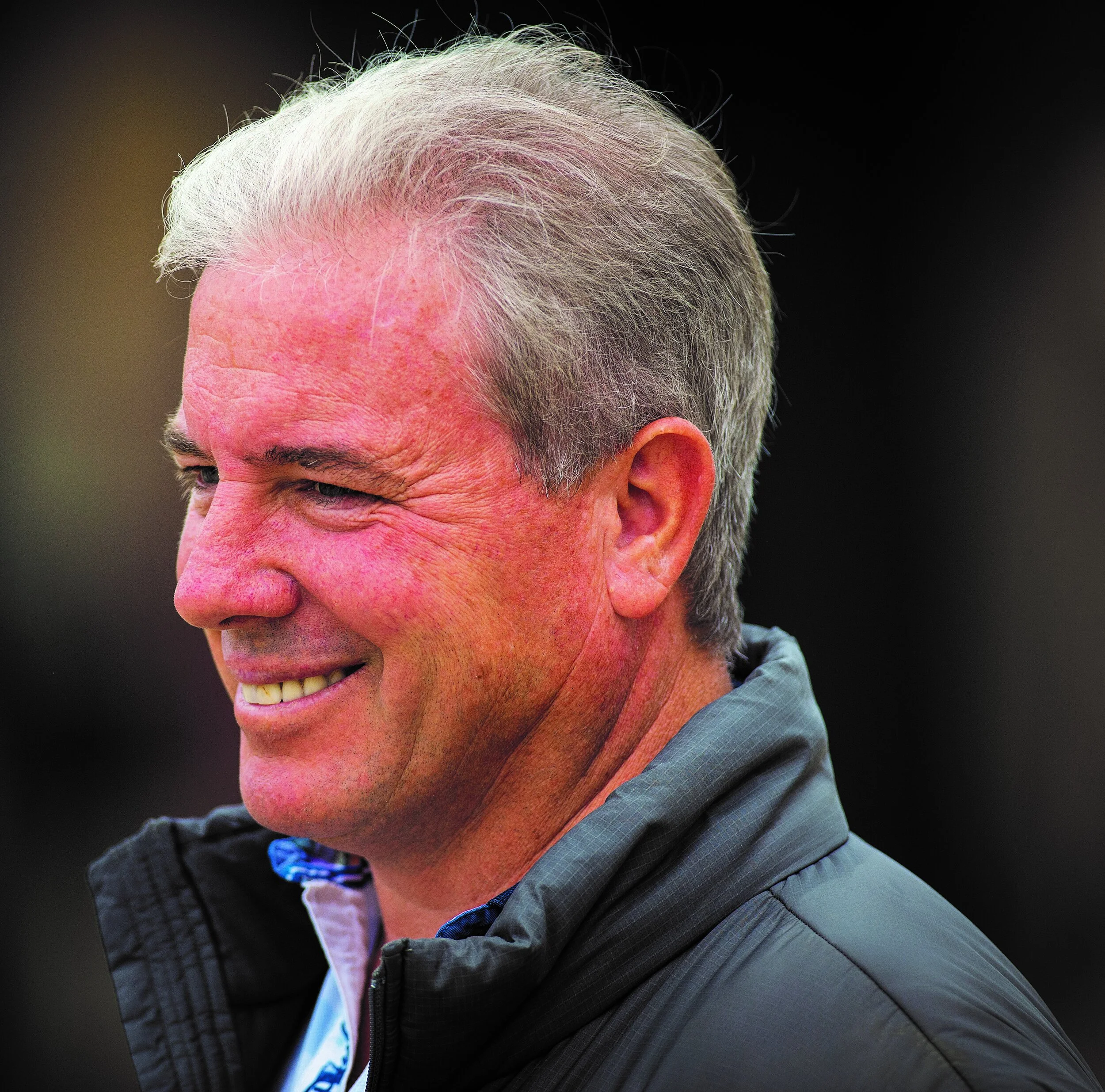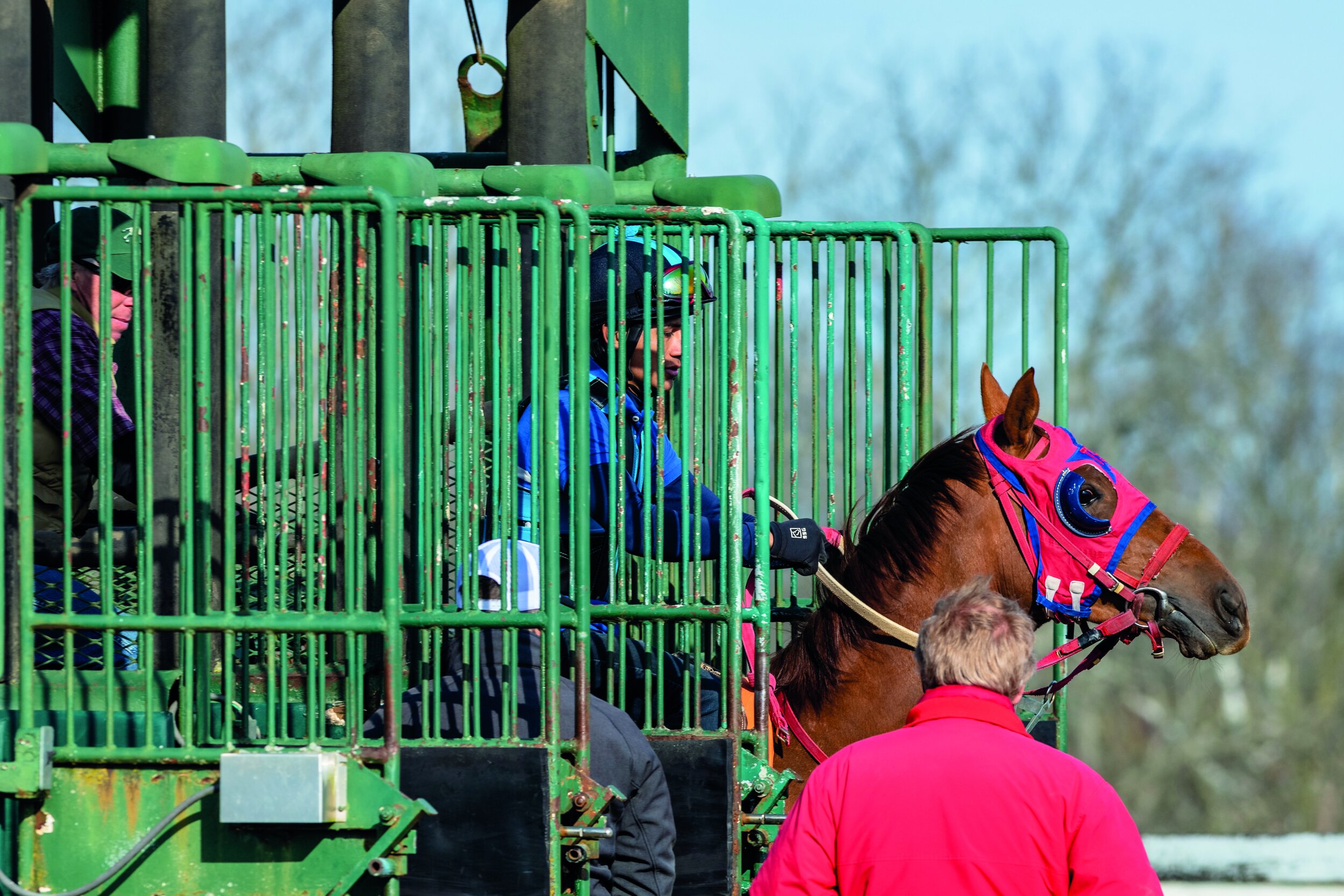Bloodstock Briefing - examining the sire lines which are no longer popular and asking what has caused their demise?
Article by Jordin Rosser
The first breeders of the modern-day thoroughbred had imported 197 Middle Eastern stallions to breed to their English mares in the 17th and 18th centuries, but only three of those stallions’ sire lines are present today – the Darley Arabian, Godolphin Arabian and Byerley Turk (1). Of these three foundational sire lines, the Darley Arabian has dominated the bloodstock industry, with both the Godolphin Arabian and Byerley Turk sire lines having dwindled in number. Even with the abundance of the Darley Arabian line, there are branches in this foundational sire’s line which have been lost or are endangered.
To discover why these sire lines are disappearing, we must look at the thoroughbred breed on a global stage. We have gathered pedigree analysts and breeders from Europe, United States, and Australia to examine the less popular sire lines and what factors caused their demise. Suzi Prichard-Jones (the author of Byerley, The Thoroughbred’s Ticking Time Bomb and founder of The Byerley Turk & Godolphin Arabian Conservation Project) and Alan Porter (a pedigree analyst for Pedigree Consultants LLC and co-creator of TrueNicks) are pedigree experts from Ireland/United States and United States, respectively. John Messara (the founder and owner of Arrowfield Stud in NSW, Australia), David O’Farrell (the operations manager of Ocala Stud in Florida, USA), and Kirsten Rausing (the owner and operator of Lanwades Stud in Newmarket, England) are breeders whose high profile, highly successful, stud farms are shaping the landscape of the thoroughbred breed.
Q: Why do you believe the Godolphin Arabian and Byerley Turk sire lines have become less prevalent?
The pedigree analyst panelists weighed in with a history of these three foundational sires, explaining how the first champion progeny sires, born in the mid-1700s, are a coordinated blend: Herod (Byerley Turk sire line – Darley Arabian mare), Matchem (Godolphin Arabian sire line – Byerley Turk mare), and Eclipse (Darley Arabian sire line – Godolphin Arabian mare).
These champion sire lines dominated the breed utterly until the 20th century. The beginning of the fall of the Godolphin Arabian line in America, most recognizable as the Man O’ War line, occurred around World War II when a tremendous number of horses were being imported from Europe.
Alan Porter mentions, “at that point, European horses were just better – dirt, turf, any surface. They swept aside the North American sire lines”. Furthermore, Porter mentions “for a 36-year period (from 1939 – 1974), with the exception of 5 times, a European stallion or son of a European stallion was the leading sire in America”- giving scale to the domination of the European imports in American pedigrees.
During this period, Northern Dancer dominated the global bloodstock due to the mixture of American pedigree and European (specifically Darley Arabian) sire lines. Suzi Prichard-Jones believes the Byerley Turk and Godolphin Arabian lines dwindled for a different reason: Temperament. The Byerley Turk horses are very intelligent and high-spirited where the Godolphin Arabian horses are tough, hardy, and determined. These characteristics, Prichard-Jones explains, require a lot of time and patience which often leads to gelding the colts, thereby ending their chance to continue the sire line.
Q: Given the dominance of some Darley Arabian sire lines over others and the shrinking of the Godolphin Arabian and Byerley Turk sire lines, what impacts on the breed do you expect if these sire lines disappear?
One of the pedigree analyst panelists, Suzi Prichard-Jones, spoke extensively on this topic. She theorizes the Thoroughbred breed’s success relies on the “balance” between the three foundational sire lines. Due to at least one other foundational sire line being found within the first six generations of every modern Thoroughbred, she believes the traits of the Godolphin Arabian and Byerley Turk are maintaining the breed to be “fit for purpose”.
Prichard-Jones speculates if these two sire lines disappear, Thoroughbreds will be “fast but heartless horses” due to the spirit, temperament, toughness, and hard-headedness characteristics the two sire lines bring. However, we truly do not know what impacts the narrowing sire lines will have as there has been insufficient genetic research available to produce future breed projections.
Q: Does the bloodstock industry place more importance on results in the sales ring or results on the racetrack – particularly involving selection of sires or predicting future success of sires?
Many panelists agreed: most of the market will select only sires whose progeny there will be a market for. Alan Porter mentions, “other than a few very high net worth individuals, a higher proportion of breeders, particularly in the US, are breeding with the expectation of selling” – dictating the change in the bloodstock industry from mostly “breed to race” operations to breeders providing a sustainable sales model.
The panelists concur that the market believes when selecting stallions for breeding mares, the stallion’s own results on the racetrack matter first, then the narrative changes to the sire’s progeny performance after the first few crops.
John Messara follows this approach and states he “is more interested in athletic performance and believes results in the sales ring will follow racetrack success”. He also mentions that Japan’s current model of breeding, by breeding the high performers with other high performers, has brought significant success on the track across the globe – giving much credibility to their methodology.
However, there are also instances of the opposite, as there are a few examples where “stallions can give progeny better than themselves”, as mentioned by Kirsten Rausing, in reference to stallions such as Danzig, who raced only 3 times in his career and is a sire of champions. This phenomenon is rare however, as the success rate of Danzig’s progeny provide a counterpoint to the conventional wisdom.
Q: How do we attempt to preserve unpopular sire lines or prevent narrowing the genetic pool of the breed?
Fortunately, there are a few tactics to help: global shutting of stallions and importing stallions to allow for outcrossing. Outcrossing, a practice that brings in “new blood” to the region’s bloodstock, typically crosses stallions who are progeny of successful stallions in other geographical regions and/or stallions that do not have any inbreeding within four generations with a chosen mare.
David O’Farrell of Ocala Stud says he is “a big believer of the outcross and not afraid to breed to certain sire lines that may not be as fashionable”. Ocala Stud is known for having stallions intended for outcrossing to local mares – many of their success stories include Girvin, Kantharos and the up-and-coming Win Win Win. Similarly, Kirsten Rausing’s Lanwades Stud has had success in “offering breeders and broodmare owners something outside of the ordinary” and a stallion who will “complement the mare population of Europe” including their current stallions Study of Man and Bobby’s Kitten.
Over the years, the industry has seen how the importing of stallions has strengthened the breed to perform well on the racetrack and in modern times, particularly in Australia and Europe, the practice of shuttling of stallions is proving to have similar results.
Through all these discussions, some panelists mentioned a glimmer of hope for the Byerley Turk, Godolphin Arabian and endangered Darley Arabian sire lines. There are multiple examples of sire lines coming back from the brink of extinction – a few favorites from the panelists include Fappiano’s Cryptoclearance line reemerging with Candy Ride (ARG), Nasrullah’s Caro line resurging with Uncle Mo, and the most successful story: Storm Bird’s Storm Cat line with 5-time American leading general sire Into Mischief. Each of these resurgences occurred after the use of the outcross technique, leading to future successful stallions and breathing new life into their sire lines.
Prichard-Jones, Suzi. “The Thoroughbred’s Genetic Cocktail”. Chart. Suzi Prichard-Jones: The Byerley Turk & Godolphin Arabian Conservation Project. Suzi Prichard-Jones, 2021. https://suziprichard-jones.com/the-byerley-turk-godolphin-conservation-project/, 04/01/2024.
From Sales Ring to Racetrack - Different opinions on bringing on the young racehorse
By Ken Snyder
The story is both funny and telling, especially as it comes from a legendary Hall of Fame trainer, courtesy of a newly minted Hall of Famer, trainer Mark Casse. Working for the late Allen Jerkens in his late teens and early 20s, Casse remembers the venerable “Giant Killer” of upset fame saying he wasn’t going to do anything with his two-year-olds because he wouldn’t have to worry about shins, sickness and all the rest. “I’m not going to train them at all at two,” Jerkens told Casse. A year later, commenting on the now three-year-olds, Jerkens said, “They did all the things they would have done at two.”
Not even a trainer as great as Jerkens can predict (or postpone) what will happen with two-year-olds, either in health or performance.
They all begin, for the most part, with fall yearling sales, most notably the August Fasig-Tipton sale in Saratoga and the Keeneland and Fasig-Tipton sales in Lexington in September and October.
Casse compares it to the NFL draft with one enormous difference: football players have a body of work—college football—to scrutinize. With horses, it’s pedigree, eye and instinct. A seven-figure Book One yearling might make the proverbial “cut list,” never even reaching the racetrack. A sale might also yield a Seattle Slew who sold for a relative pittance—$17,500 in 1975—and who etched himself into racing history as both a Triple Crown winner and legendary sire.
The “pre-season” for yearlings, to borrow again from football, is sales prep. Ninety days before a sale is the ideal time to begin prepping yearlings, according to a 10-year veteran of Thoroughbred consigning, Sarah Thompson, now an equine analyst for Eclipse Bloodstock. The minimum can be as little as 30 days.
Good looks can mean gold, and that is a variable with young horses that can be controlled somewhat. For a dark, rich coat, most yearlings (except for a few not keen on being outdoors all night) stay in the barn through summer months till seven in the evening when they are turned out into paddocks for the night. Sun can bleach coats, especially tails. (The few horses kept inside do get turn-out in the mornings but are brought in before the afternoon sun.)
Baths and grooming are daily, and as sales dates near, it ramps up with curry-combing to remove dead hair and application of hoof conditioner to improve appearance and strengthen hooves.
Conditioning is literally conditional as yearlings are not broken at this point. “There’s a lot of hand-walking. We also have automatic walkers,” said Thompson. Swimming is part of the regimen as well. “The idea there is you get the condition without the impact on the joints and bones,” she added.
Diet is generally the same for all yearlings. How a horse puts on muscle and weight (or doesn’t) and the horse’s body type can mean a tweak either to more nutrition or less.
There is little to prepare yearlings for a sales environment except for schooling on how to stand to show off conformation. The pose is standard for all horses but must be taught: left front leg forward, right slightly behind; left hind leg back, right hind slightly in front.
One surprising factor to horse sales has nothing to do with the horse, according to Thompson: “Having some of the best showmen on the grounds show [that] your horse can make you or break you. A good showman can move with that horse. Quiet hands are always a good thing, and honestly, it’s sort of the rapport between a showman and a horse.”
Once sold, it’s off to training centers and farms to determine if the yearling is worth what it cost.
Mark Casse
Casse operates his own training facility in Ocala, Florida—something he considers a huge advantage to his racing stable. Because of his success on the racetrack (career earnings are over $192 million and over $8 million in 2021 alone at the time of writing), he attracts a variety of owners, some of whom don’t have the goal you would expect: a Kentucky Derby winner. “I find out what people’s goals are. If your goals are to just have fun and win some races, then you go out and buy a speedier kind of horse that you can get ready earlier,” he said. “They’re not as expensive.” Others like John Oxley spend more, hoping for a Derby or Kentucky Oaks horse.
For a trainer of Casse’s stature, it is surprising that he also trains for one-horse owners who have paid as little as $5,000 for a horse. “I seldom turn somebody down as long as they have a passion for racing.”
Wesley Ward has built a Hall of Fame-worthy reputation with yearlings. His career win rate with two-year-olds is 24%, and at the time of writing, it was 33% for 75 starters this year. His success at Royal Ascot with “babies” has made him literally world famous. “I’ve won 12 races over there, and I think eight are two-year-old races,” he said.
He confirms what Casse says about owners’ goals. “Most of our horses are sprinters. The owners and stable managers tend to be giving me them,” he said. Ward might be minimizing accomplishments, however, as his overall win rate for horses of all ages is near the top for all trainers, a more-than- respectable 22%.
Wesley Ward
Ward isn’t protective of any “trade secrets” to account for two-year-old success. Winning is largely a matter of getting out of the gate well, for races run over distances as short as four-and-half-furlongs. “Most of my [exercise] riders that go to the gate are ex-jockeys,” he said. Again, he might be exercising excessive modesty when he said, “It’s not the trainer, but the person on their back.”
He does say he spends a lot of time “just getting the horses not scared” in gate training.
Ah, the gate—what Ward called the “big scary monster—this apparatus that we’re locking them up in.”
Everyone has their methods for gate training and, as any racing fan knows who has watched a horse balk or worse at either entering the gate or staying calm till it opens, nothing is foolproof. At his training center, Casse positions his gate where every horse every day must walk through it going and coming to the track. “That way it’s not something new to them,” he said. “After we do that for a couple of months where they’re used to it, then we move it over and change positions with it.” At that point, they go through a typical progression of having back doors closed and then front doors before breaking from the gate.
Travis Durr, owner of Webb Carroll training center in St. Matthews, South Carolina, employs a “monkey see, monkey do” principle in teaching gate work for yearlings as well as training in general. Like most every trainer of yearlings, he introduces gate work early but only a “few times a week,” unlike at Casse’s training center. Yearlings will follow a pony through initially.
An alpha male or female who will lead the pack takes it from there, showing the way for others. “If you’ve got 10 out there, you see which ones kind of want to be the boss, and which ones kind of want to lay back.”
Webb Carroll is known for exercising large sets with as many as 16 riders at work, depending on the time of year. “They’re used to being out all together. If you have a problem horse, it just makes it easier. They see all the other horses doing something, so they kind of fall right in. It’s a lot easier than if you’re getting just one to go out there.”
It is out of the gate, of course, where Thoroughbreds can earn fame and fortunes for owners. Methods in getting yearlings up to a three-eighths breeze vary between training centers and trainers. For Casse, the goal for a horse's first breeze will be 45 seconds or 15 seconds per eighth for a fall, two-year-old starter.
“A lot of times, they’ll all go in 45, but you can tell which ones it takes more of an effort to do that. That’s how they first start separating themselves.”
For Richard Budge, general manager of Margaux Farm in Midway Kentucky and former farm trainer for Winstar Farm, the first breeze will be a short sprint over a single eighth of a mile. “Then we take them up to a quarter [mile] and then three-eighths.”
Budge also separates the yearlings into early, middle and late groups. “The late group may be horses that may need a little more time or have a physical issue, so therefore you push them to a later group to break. I say the early group would obviously be the horses with a January, February, March birth date—that look physically ready to go right on with.”
Like Casse, the stopwatch is not as important to Budge as the way the horse goes about it. “If they’re doing it easily as opposed to flat out, that would be more important,” he said.
Margaux is a European-style farm, featuring a slightly uphill one-sixteenth mile straight with a Tru-Stride synthetic surface. Budge, an Englishman who has trained there, France, Brazil and the U.S., believes the combination of surface and straight track keeps yearlings more sound. A turn at the top of the straight does teach young horses to change leads.
Considering that two-year-olds are the human equivalent of 13-year-olds—arguably the toughest age for parents and teachers—trainers like Casse and Ward embrace the task of getting yearlings to the race track. Ward, in fact, expresses a preference for them. “This is what I love to do, especially the younger horses. This is what really excites me.”
And that’s a good thing—something with which Allen Jerkens might not agree…
When is a win not a win? Trainer Mark Casse has a surprising perspective on this.
First of all, his proficiency with two-year-olds is easily overlooked. His 2021 win rate with two-year-olds is 21%, and his career earnings with them are over $52 million compared to Wesley’s Ward’s career earnings of $28.3 million for the first-year starters. Most interesting, perhaps, is career earnings per start for Casse (at time of writing): $11,596 compared to Ward’s $11,065.
Success with two-year-olds is largely ignored but also improbable, considering his approach to “baby races.” “Never is it my goal to win first time out,” he said. “For the most part, it can be one of the worst things that can happen to a horse.
“A lot of times, what happens is we have a horse break his maiden first time out; and next thing you know, he’s running in stakes. At some point, no matter how fast you are, there’s going to be somebody faster than you. If you have a horse that knows nothing but to be on the lead, what if he breaks a little slow? What if something happens? I tell all my riders, the first time they ride a two-year-old for me, I’d rather be a closing fourth than a dying third. I like my horses to learn to run-by horses.
“Now, that being said, if a horse breaks running, and breaks one or two on top, they’re going to go with it.”











